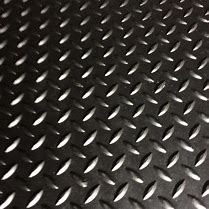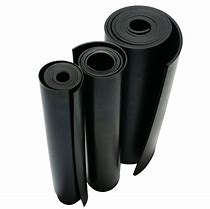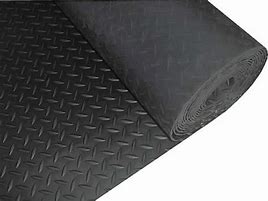In pig farming companies, cereals have been used as the main source of energy in pig diets. Although grain-based diets (basically consisting of grains and bean cakes with some mineral elements and vitamins) can meet the nutritional requirements of pig growth and fattening, there are still some problems. For example, cereals are actually calcium deficient and total phosphorus is relatively high. A large proportion of total phosphorus has no biological value for pigs because the phosphorus in grains and beancake is in the form of phytate phosphorus. Phosphate phytate is a natural chelate composed of one or several divalent mineral cations. In order to solve these problems, this paper discusses the needs of calcium and phosphorus nutrition in different stages of pigs, and discusses the complex interaction between these two mineral elements. Studies have shown that the ability to meet the nutritional needs of pigs for calcium and phosphorus at different stages is mainly affected by the following three factors: 1 is that the diet must contain enough available calcium and phosphorus; 2 is the available calcium in the diet and The proportion of phosphorus should be appropriate; 3 is the need to contain the right amount of vitamin D in the diet.
1. Physiological function and body distribution of calcium and phosphorus
Calcium and phosphorus account for about 1/3 of all minerals in pigs. The higher content is the material basis for determining the important physiological functions of calcium and phosphorus. About 99% of calcium and 90% of phosphorus are present in the bones of pigs. The bone inorganic matrix consists of calcium and phosphorus [hydroxyapatite Ca3(PO4)2?2H2O, Ca3(PO4)2, CaCO3] The bone organic matrix (collagen, non-collagen proteins such as proteoglycans and osteonectin), bone stromal cells, and interstitial fluids together form all the bones of the pig to achieve weight support and exercise with the muscles. . Although the amount of calcium distributed in body fluids is small, it plays an important role in maintaining the normal physiological functions of the body. Calcium in extracellular fluid can reduce the excitability of nerves and muscles, reduce the permeability of capillaries, maintain normal bone and meat contraction, maintain normal conduction of nerve impulses, and participate in normal blood coagulation. Phosphorus other than bone participates in the structural substances that constitute living cells, participates in the synthesis and degradation of organic compounds (sugar, fat, protein), and participates in energy release, storage and utilization in the form of high-energy phosphate compounds (ATP, ADP). The form of HPO4- participates in the regulation of the acid and base balance of body fluids.
The content and distribution of calcium and phosphorus in pigs are affected by various factors such as age, body weight and physiological condition. However, calcium and phosphorus are essential bio-inorganic elements in the body, and the content in tissues and organs in the body is relatively constant.
2, calcium, phosphorus, vitamin D absorption and metabolism
2.1 Calcium absorption and metabolism
Calcium is absorbed in the duodenum and jejunum in the form of calcium ions. The absorption direction of calcium is from the side of the small intestine mucosa and then from the serosal side. There are three main ways: 1) actively traversing the cells, including calcium ions diffusing into the cells through the chorion, moving in the cytoplasm, and from the cells. Introgression of extracellular cells; 2) Intercellular transfer of calcium ions, which works only when the concentration of calcium ions in the small intestine is sufficiently high; 3) through the cellarization and exocytosis of the cells. When calcium ions enter the small intestine cells, energy is no longer needed by the electrochemical gradient. Intracellular calcium ions are transferred in the form of calcium binding protein, free calcium ions and calcium ion vesicles. When calcium ions ooze out from the cells to the outside of the cells, the calcium in the calcium ion-binding protein is discharged by the calcium pump; the free calcium is exchanged with sodium-potassium for calcium ion exchange; the calcium bubble which enters the cells by the pinocytosis is released by exocytosis. calcium. The intercellular transfer of calcium depends on the degree of junction between the cell membranes, and some amino acids such as lysine can constitute intercellular calcium ion transfer.
During the absorption of calcium, vitamin D3 is essential for the absorption of calcium, as active vitamin D3 (1,25-(OH)2-VD3) is involved in the synthesis of calcium-binding proteins in small intestinal mucosal cells. Vitamin D3 also promotes the flow of calcium ions between cells. High phosphorus, high magnesium, high zinc, high oxalic acid and high phytic acid in the diet interfere with the absorption of calcium; citric acid, lactose and sucrose can improve the absorption of calcium; excessive fat or fat indigestion in the diet can form Insoluble calcium soap, which reduces the absorption of calcium.
During calcium metabolism, calcium homeostasis is regulated by a number of factors including dietary calcium, phosphorus levels, vitamin D, parathyroid hormone (PTH), and calcitonin. Calcium intake affects calcium absorption and bone resorption through the regulation of PTH and vitamin D metabolites. Low-calcium diets result in increased calcium absorption because low diets tend to plasma calcium, thereby increasing PTH release. PTH promotes the conversion of kidney 25-hydroxycalciferol to 1,25-dihydroxycalciferol, resulting in enhanced calcium absorption. The regulation of circulating levels of calcium in the blood depends on the secretion of PTH and calcitonin, which control the deposition and reabsorption of bone calcium. Eating low-calcium diet, plasma low calcium, stimulate the secretion of PTH, thereby promoting the release of bone calcium and phosphorus, to meet the needs of calcium in the body, and phosphorus is discharged; eating high-calcium diet will inhibit the use of bone calcium. Therefore, calcium and phosphorus in the bone are in dynamic equilibrium, which often manifests as deposition and reabsorption of bone calcium and phosphorus. Calcium excretion in pigs is mainly excreted from the feces, including calcium that has not been digested and absorbed, and endogenous fecal calcium. The amount of calcium excreted in pigs is small, but it still reflects the retention and utilization of calcium. Pig metabolized fecal calcium is 0.0322g, and endogenous urinary calcium is 1% of fecal calcium.
2.2 Phosphorus Absorption and Metabolism
Phosphorus is absorbed in the form of phosphate ions, and the absorption site is mainly the intestinal epithelium at the distal end of the duodenum. The absorption of phosphorus is affected by the pH and sodium concentration of the absorption site. When the relative pH of the small intestinal juice is constant and the sodium concentration is increased, the absorption of phosphorus increases. When phosphate is absorbed, it is necessary to dissolve in the small intestine. When some metal ions form a salt with phosphate, it is difficult to dissolve, which will reduce the absorption of phosphorus. In contrast, inorganic phosphorus absorption rate is high, and organic phosphorus (phytate phosphorus) is not easily used by pigs, but the addition of phytase in the diet can increase the absorption of phosphorus. Phosphorus metabolism in bones is dynamic, and it is used to adapt to the physiological needs of the body's physiological processes, resulting in the passive use of bone phosphorus. Excessive phosphorus in the body is excreted in the urine. Phosphorus in the feces mainly includes undigested phosphorus, and a small portion comes from digestive juices including bile. The endogenous fecal phosphorus loss is 0.02 g per kilogram of body weight. The requirements for calcium and phosphorus in different weight stages of pigs are different, and there is a tendency to gradually decrease with the increase of body weight.
Our company specializes in providing commercial rubber sheets to consumers across the continent. Our inventory of sheet rubber consists of various different types of Elastoplast. Each of these rubber products is meant for different types of uses. Some of them, like a natural gum Rubber Sheet, are great for use as general sealing materials. Others, such as a silicone sheet rubber rolls, are meant for specific applications involving very high or very low temperatures. 1.With careful compounding,has really good tensile strength.
2.Low permeability to air and other gases.
3.Excellent resistance to ozone, oxidation and sunlight.
4.Excellent temperature range of -45°C to +130°C for normal compounds and even better with
special formulations.
5.Low resilience,ideal for vibration damping and shock absorption applications.
6.Moderate resistance to abrasion and compression set.
7.Highly resistant to mineral acids, alkaline and aqueous acids.





Industrial Rubber Sheet,Rubber Sheet,Industrial Rubber Foam Sheet,Waterproof Rubber Sheet
Renqiu Xingcheng Rubber Products Co., Ltd. , http://www.xingchengrubber.com